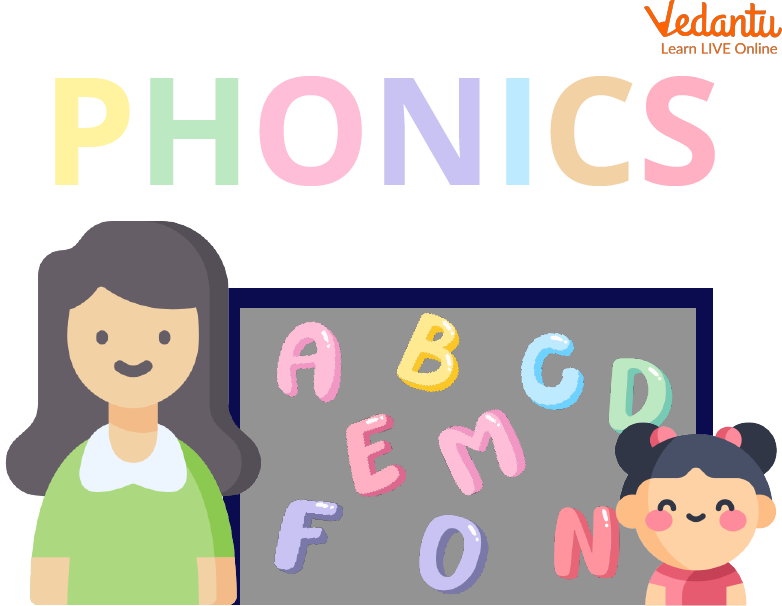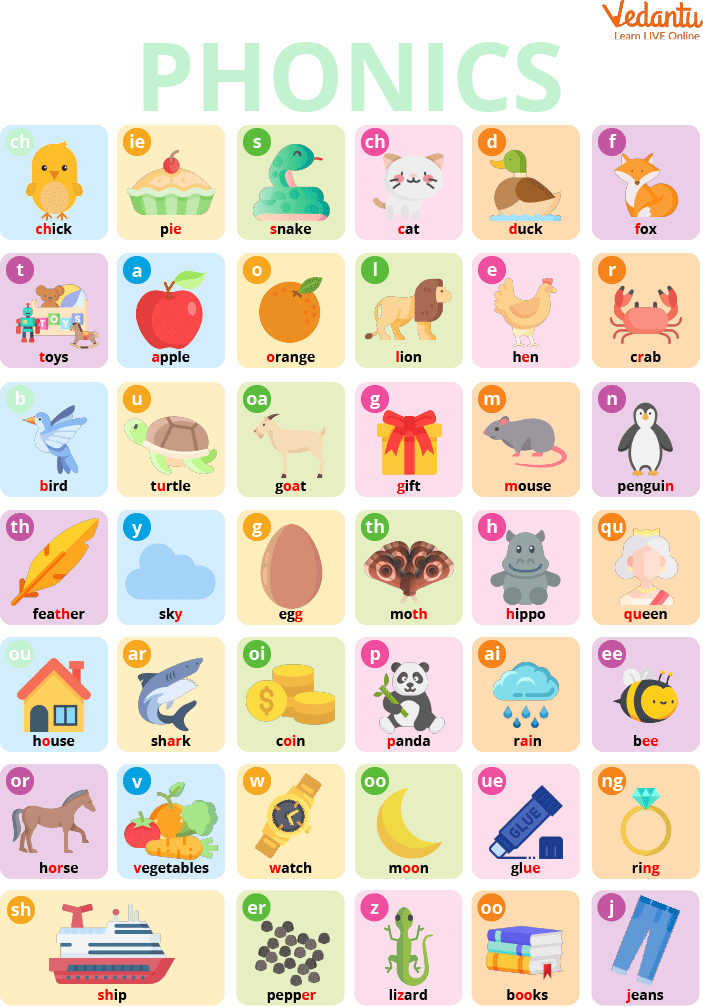




Three Letter Words - Phonics for Kids
Phonics is a tool to teach the link between sound and letters used for written language. With the help of phonics, you can teach your child reading and writing. There are so many methods to teach phonics, some methods are synthetic phonics, analytical phonics, analogy phonics, and embedded phonics. Kids can practice beginner phonics three letter word worksheets to excel at it. Here we are going to learn what phonics are, phonics’ importance, how to teach phonics to kids, and three letter phonics.

Phonics
What is Phonics?
Methods of teaching how to write and read can be easily learnt with the help of phonics. Every letter has its sound. By learning different sounds, one can identify different letters. Phonics makes it easy to differentiate between words with the help of other sounds. Children can easily decode a single letter with the help of phonics.
How to Teach Phonics?
For a child, learning phonics is a crucial step. Phonics are the building blocks of any language. Teaching phonics may be a difficult step for some people. Some effective steps make teaching phonics easy. Synthetic phonics, Embedded phonics, Analogy phonics, and Analytic phonics are some effective methods used to teach phonics to young learners.
Synthetic Phonics
The most popular method for teaching reading is in which the phonemes (sounds) connected to certain graphemes (letters) are uttered separately and combined (synthesised). Children are taught, for instance, to break a single-syllable word like a cat into its three constituent letters, pronounce a phoneme for each letter in turn (/k, ae, t/), and then combine the phonemes to form the word.
Analytical Phonics
This method, which is common in Scotland, is used to teach reading and does not pronounce the phonemes connected to specific graphemes separately. Children recognise (analyse) the shared phoneme in a group of words where each word contains the phoneme they are learning about. For instance, the teacher and students talk about how the words pat, park, push, and pen are similar.
Embedded Phonics
A method of teaching reading in which phonics is just one component of a comprehensive language program. In contrast to previous methods, embedded phonics identifies the abilities to be taught opportunistically rather than systematically and always presents education within the context of literature.
Analogy Phonics
It is a sort of analytic phonics in which kids analyse phonic components based on the word's phonograms. A phonogram, sometimes referred to as a rime in linguistics, is made up of the vowel and all of the consonants that come after it, such as the -lake in the word cake. These phonograms are used by kids to teach them about "word families," such as cake, make, bake, and fake.
Three Letter Word Phonics for Beginners
A- letter: cab, rat, nap, sat, mat, mad, sag, tag, wag, tan, zap, vat, jam, ham, tap, can, fan, man, vat, hat, fat.
E- letter: elf, egg, peg, leg, vet, neg, hen, net, pet, set, yet, let
I- letter: ink, ice, ill, pig, big, sit, six, oil, pie, tie
O-letter: cob, job, rob, log, pop, box, mom, log, top, rod
These words can be mastered by solving 3 letter words for kids worksheets.

Different Phonic Sounds
Three Letter Words for Kindergarteners
Hat
Pat
Sat
Let
Pin
Sun
Set
Bed
Bat
Rat
3 letter words for kids worksheets will be helpful in a better understanding of these phonics.
Summary
For a child, learning phonics is an important step. Phonics makes the building blocks of any language. By practising beginner phonics three letter words worksheets, the concept of phonics can be understood easily. This will help children to master harder words of more syllables and thereby improve their speaking, reading and writing skills.
FAQs on Phonics: Beginner Phonics with Three Letter Words Worksheets
1. How is a long vowel sound different from a short vowel sound?
Vowels in the middle of one-syllable words typically have a short sound. Cat, dog, guy, hat, mum, dad, got are a few examples. This letter is frequently duplicated if the letter following the vowel is an f, l, or s—for instance, a staff, ball, or pass. Vowels in the middle of one-syllable words typically have a short sound. Cat, dog, guy, hat, mum, dad, got are a few examples. This letter is frequently duplicated if the letter following the vowel is an f, l, or s. Examples: staff, ball, pass.
2. Write phonics ending with at, an, en, ot, et and it.
Phonics ending with at: mat, pat, cat, sat, fat, dad, rat, pat, slat, vat, that, chat, bat.
Phonics ending with an: pan, can, man, fan, ran, tan, plan, scan, then, clan, van, ban.
Phonics ending with en: men, pen, ten, den, hen, then, when, wren.
Phonics ending with ot: cot, pot, hot, hot, rot, blot, slot, spot, shot, plot, knot.
Phonics ending with et: pet, set, get, met, wet, let, jet, yet.
Phonics ending with it: pit, bit, quit, knit, outfit, spit.
3. What is the goal of giving Phonics instructions to kids?
The phonics instructions are given to children to help them learn the basic alphabetical principle that the letters represent the sound of spoken language. There is a well-established relationship between spoken sounds and written letters. By learning this relationship, kids learn to study and apply those relationships to letters, which helps them read and write fluently.
4. Write some exceptional words on which phonics don’t work.
There are many exceptional words such as the, says, said, were, me, here, here, there, love, come, one, door, floor, mind, climb, etc. on which phonics don’t work.
5. What are non-phonetic words? Give some examples.
Apart from phonetic words whose sound can be understood just by looking at the letters in their spelling, some words are not spelled according to the basic phonetic rule, which is the sound of written letters. They are also called exceptions or tricky words. For instance, want, although want has ‘a’ in its spelling but is spelled as ‘o’. There are many other words like this such as swan, was, etc.















